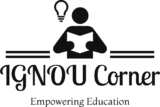Write Short Notes on the Following:
a) Types of Customers at the Workplace
Customers at the workplace can be broadly classified into two types:
1. Internal Customers
- These are individuals or departments within the same organization who depend on others for services or support to perform their tasks effectively.
- For example, the IT department provides technical assistance to other departments like marketing or HR, making them internal customers.
- Internal customer satisfaction is crucial for smooth operations and maintaining a collaborative workplace environment.
2. External Customers
- These are individuals or organizations outside the company who purchase or utilize the company’s products or services.
- They directly contribute to the revenue and reputation of the business.
- Ensuring their satisfaction through quality products, excellent customer service, and effective communication is critical for the organization’s success.
Both types of customers play a vital role in the overall functioning and growth of a company, and addressing their needs efficiently is essential for sustaining business operations.
—
b) Characteristics of Work Ethics
Work ethics refer to the values and principles that guide professional behavior. They contribute to personal growth, organizational success, and a positive work culture. Key characteristics include:
- Punctuality: Demonstrating respect for time by adhering to schedules and meeting deadlines promptly.
- Reliability: Being dependable and consistent in fulfilling responsibilities, ensuring that colleagues and supervisors can trust your performance.
- Integrity: Displaying honesty and adhering to moral principles, even in challenging situations.
- Accountability: Taking ownership of your actions, whether the outcomes are positive or negative, and striving for improvement.
- Professionalism: Maintaining appropriate behavior, communication, and attire to reflect a commitment to the job and the organization.
- Teamwork: Collaborating with others, valuing diverse perspectives, and contributing to group objectives.
- Self-Motivation: Exhibiting a proactive attitude by taking initiative and continuously striving for excellence.
Work ethics create a foundation for a productive and respectful workplace, fostering trust and mutual respect among employees and employers.
—
c) Common Trends in E-Communication
Electronic communication (e-communication) has transformed workplace interactions. Some significant trends include:
- Instant Messaging and Collaboration Platforms: Tools like Microsoft Teams, Slack, and WhatsApp facilitate instant messaging and file sharing, making communication faster and more efficient.
- Video Conferencing: Platforms like Zoom, Google Meet, and Skype enable virtual face-to-face communication, essential in remote work setups. These tools have become indispensable for team meetings, interviews, and client presentations.
- Social Media Integration: Social media platforms like LinkedIn, Twitter, and Facebook are increasingly being used for professional networking, customer engagement, and brand promotion.
- Mobile-Friendly Communication: The prevalence of smartphones allows employees to access emails, messages, and work platforms anytime, fostering flexibility and real-time responses.
- Cloud-Based Services: Platforms like Google Drive, OneDrive, and Dropbox facilitate collaborative work by allowing teams to access and edit shared documents seamlessly.
- Data Analytics in Communication: Businesses analyze communication patterns using AI tools to improve customer interactions, measure response times, and enhance efficiency.
These trends make communication more dynamic and adaptable, improving productivity and connectivity within and outside the organization.
—
d) Behavior Code at the Workplace
A behavior code is a set of guidelines defining appropriate conduct within a professional environment. It promotes a respectful and productive workplace culture. Key aspects include:
- Respect: Treating all colleagues, clients, and stakeholders with dignity, regardless of their position or background.
- Confidentiality: Safeguarding sensitive organizational information and not sharing it with unauthorized individuals.
- Inclusivity: Creating an environment free from discrimination and bias based on gender, race, religion, or other personal attributes.
- Conflict of Interest: Avoiding situations where personal interests could compromise professional responsibilities or the company’s integrity.
- Compliance with Policies: Adhering to organizational rules, policies, and legal requirements to maintain a harmonious workplace.
- Ethical Behavior: Upholding honesty, fairness, and transparency in all professional dealings.
- Team Collaboration: Encouraging open communication and constructive criticism while resolving conflicts amicably.
A strong behavior code fosters trust, accountability, and mutual respect, making it easier to achieve organizational goals efficiently and ethically.





